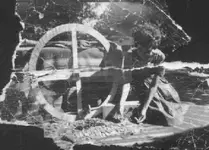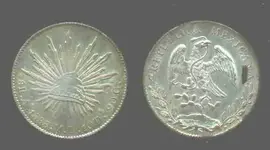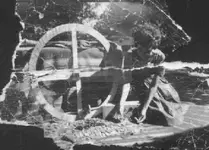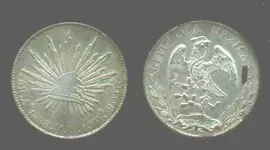EE THr
Silver Member
RDT-TT---
Although you didn't ask me specifically, I can tell you what I know about the Polaroid.
I believe it was invented by a guy named Land, and Polaroid was the company that made them.
On the black and white, after the picture was snapped, the photographic paper was pulled through tight rollers, which spread developer, which was in a pouch at the beginning of the paper, over the picture to develop it. Then, as soon as it fully developed, you had a stick of stop bath or "fixer," which you smeared across the picture to stop the developing process.
The color versions had the fixer mixed in with the developer somehow.
Since the paper was exposed directly, without a negative, I would assume that the chemicals used to create the picture were different than what was on the negative film type, or even the slide (positive film) type. Which may account for the unusual sensitivity performance sometimes seen with various types of subject matter.
I think that's close to the general idea, anyway.
Didn't mean to butt-in or nothin', but I somehow doubt that SWR wants to explain how these picked up the gold phenomenon, anyway!

Although you didn't ask me specifically, I can tell you what I know about the Polaroid.
I believe it was invented by a guy named Land, and Polaroid was the company that made them.
On the black and white, after the picture was snapped, the photographic paper was pulled through tight rollers, which spread developer, which was in a pouch at the beginning of the paper, over the picture to develop it. Then, as soon as it fully developed, you had a stick of stop bath or "fixer," which you smeared across the picture to stop the developing process.
The color versions had the fixer mixed in with the developer somehow.
Since the paper was exposed directly, without a negative, I would assume that the chemicals used to create the picture were different than what was on the negative film type, or even the slide (positive film) type. Which may account for the unusual sensitivity performance sometimes seen with various types of subject matter.
I think that's close to the general idea, anyway.
Didn't mean to butt-in or nothin', but I somehow doubt that SWR wants to explain how these picked up the gold phenomenon, anyway!









